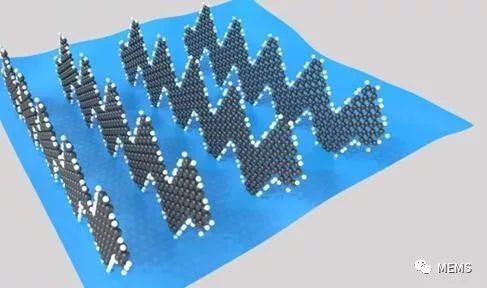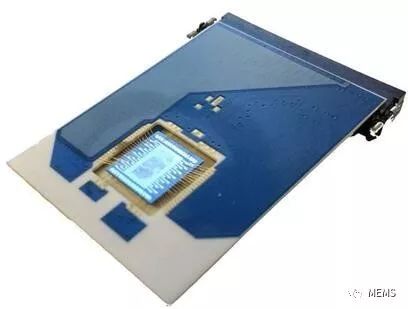According to a report by the James Consulting Group, a recent study by the University of Nebraska-Lincoln pointed out that fixing a DNA-sized carbon ribbon to a gas sensor can increase its sensitivity and is far superior to any other existing carbon material. The team developed a new nanobelt made of graphene, a 2D honeycomb made up of carbon atoms. When researchers integrated nanoribbon films into the gas sensor's circuitry, they were 100 times more sensitive to molecular responsiveness than previous sensors, even the best performance carbon-based materials. Alexander Sinitskii, associate professor of chemistry at the University of Nebraska-Lincoln, said, "We have also studied other carbon-based materials such as graphene and graphene oxide. Using graphene nanoribbons, we can see the response of the sensor. But we didn't expect it to be higher than we have seen in the past." This image shows how the gas molecules expand the gap between the rows and rows of the graphene nanoribbons. Alexander Sinitskii of the Nebraska Center for Materials and Nanosciences and colleagues have suggested that this phenomenon partially explains how nanoribbons provide unprecedented sensitivity to sensors. Sinitskii and his colleagues suspect that the significant performance of nanoribbons is partly due to nanoribbons and An unusual interaction between gas molecules. Unlike their predecessors, the team's nanoribbons are neatly arranged, similar to Charlie Brown's striped shirt, rather than lying flat on the surface. The team pointed out that gas molecules can separate these rows and columns, effectively extending the gap between the nanoribbons and helping the electrons jump to the conductive region. Add (benzene) ring Graphene nanoribbon nanofilm graphene was discovered in 2004 and eventually won the Nobel Prize for its unparalleled conductivity. However, the material lacks a band gap, and electrons need to obtain energy before jumping from the orbit around the atom to the external "guide band" that drives the conductivity. In the initial stage, graphene has caused many obstacles to researchers because of its low conductivity. Accordingly, the application of graphene to the field of electronics that requires any adjustment of the conductivity of the material has also presented challenges. One potential solution is to trim graphene into nanoribbons and computer simulations of band gaps that are difficult to possess. The above schemes have proven to be difficult through experiments. In order to preserve the attractive properties of graphene, atomic precision is required. Therefore, researchers began to prepare nanobelts from the bottom up, strategically polymerizing molecules to certain types. On a solid surface. Although this process solved the problem, and the resulting nanoribbons did have a band gap, the number of nanoribbons that researchers made at one time was limited. In 2014, Sinitskii pioneered a liquid solution that can mass-produce nanoribbons, a key step in expanding the technology's use in electronics. However, films made from these nanoribbons have insufficient conductivity and cannot be electrically measured.
Outdoor Fixed LED Display is a popular product for its high quality, every year sold to at least 80,000 pieces around the world, including Europe, North America, southeast Asia.Compared to other indoor LED display in the market, its biggest advantage is that it can display high-definition images while maintaining low power consumption.Besides, it adopts Die casting aluminum cabinet which is ultra-thin and ultra-light and owns good heat dissipation.Easy to install and maintain and suitable for multiple indoor scenes.
Application:
Movie theaters, clubs, stages.
Outdoor Fixed LED Display,Led Wall Display Screen,Curved Led Display Screen,Led Display Board Guangzhou Chengwen Photoelectric Technology co.,ltd , https://www.cwleddisplay.com
Researchers published their findings in Nature Communications, showing that gas molecules can significantly alter the resistance of nanoribbon films. Different gases produce different resistance characteristics that help the sensor distinguish between them. Sinatskii, a member of the Nebraska Center for Materials and Nanosciences, said, “There are multiple sensors on a single chip. We can prove that we can distinguish molecules with almost the same chemical properties. As shown below, we can distinguish between methanol and ethanol. Therefore, these graphene nanoribbon-based sensors are not only sensitive but also selective." 

The team's latest research uses the most primitive chemical method to add a benzene ring (a ring molecule with six carbon atoms and hydrogen atoms) on either side of the first generation of nanoribbons. These rings widen the nanoribbons, reduce the band gap, and increase the conductivity. Sinitskii said, “People do not usually think of using graphene nanoribbons as sensor materials. However, the same (nature) makes nanobelts good for devices such as transistors, increasing their conductivity by several orders of magnitude and also for sensors. Benefits." "In the future, it is possible to design many different types of graphene nanoribbons with different characteristics. Currently only several types of nanobelts have been experimentally verified, but chemists have many interesting features for unsynthesized nanometers. Theoretical speculation. Therefore, in the near future, researchers are expected to develop new nanobelts with better characteristics, with better sensor characteristics to come to everyone."
* Business Organizations:
Supermarket, large-scale shopping malls, star-rated hotels, travel agencies
* Financial Organizations:
Banks, insurance companies, post offices, hospital, schools
* Public Places:
Subway, airports, stations, parks, exhibition halls, stadiums, museums, commercial buildings, meeting rooms
* Entertainments: